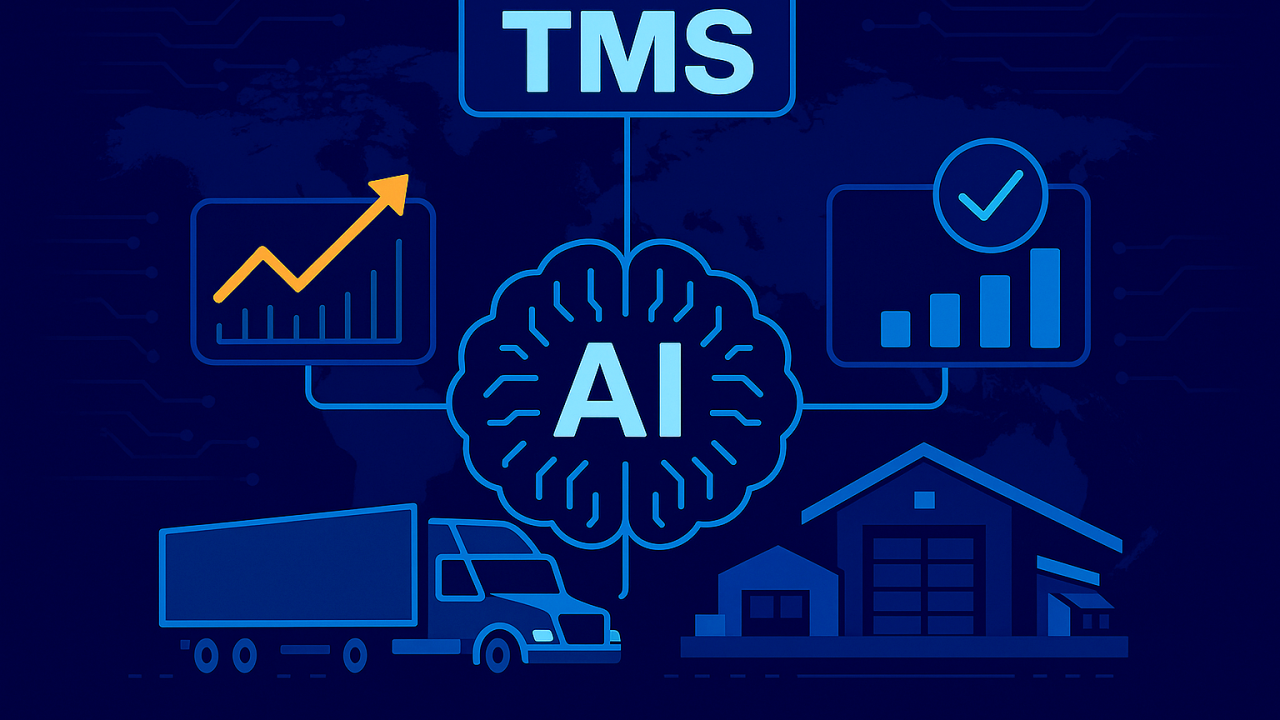Transportation management systems have been integral to supply chain management since the late 20th century, evolving from basic tools designed to address inefficiencies and fragmentation into sophisticated platforms that optimize the planning and execution of shipments. The 1980s marked a significant period where personal computing and the advent of Enterprise Resource Planning (ERP) systems began to revolutionize supply chains, enhancing the capabilities of TMS to manage complex logistics operations.
The ongoing shift towards digitalization has further amplified the importance of TMS in modern logistics. As of 2021, the global logistics industry was valued at over €8.4 trillion and is projected to exceed €13.7 trillion by 2027, underscoring the escalating demand for efficient supply chain solutions. A McKinsey survey revealed that 90% of supply chain leaders are investing in digital supply chain management technologies, with 80% planning to continue these investments beyond 2025, aiming to enhance advanced planning and operational efficiency. This trend highlights the critical need for smarter logistics solutions to navigate the complexities of global trade and meet the rising expectations for speed and transparency in the supply chain.
How AI Enhances Logistics Efficiency
AI has become a game-changer in the logistics industry, revolutionizing various aspects of supply chain and transportation management. By automating processes, providing insights, and enabling faster decision-making, AI helps companies optimize operations, reduce costs, and improve customer satisfaction. Here are the keyways in which AI enhances logistics efficiency:
Route Optimization and Real-Time Decision-Making
AI-powered systems use algorithms and data analytics to identify the most efficient routes for transportation. By considering variables such as traffic conditions, weather, road closures, and delivery windows, AI can dynamically adjust routes in real-time, ensuring timely deliveries while minimizing fuel consumption. This leads to significant cost savings and reduced carbon footprints. AI tools can also predict potential disruptions, such as traffic jams or delays, allowing logistics managers to take proactive actions to mitigate them.
Predictive Analytics for Demand Forecasting and Risk Management
AI uses historical data and machine learning algorithms to predict demand trends, helping logistics companies plan their resources accordingly. By accurately forecasting demand, businesses can avoid overstocking or understocking, optimize warehouse management, and ensure timely restocking of inventory. AI-driven predictive models also assess risks in the supply chain, such as potential delays, supply shortages, or geopolitical events, allowing companies to take preventive actions or adapt their strategies to minimize disruptions.
Examples of AI-Driven Tools Transforming Logistics Operations
Several AI-powered tools are already transforming logistics operations. One notable example is Route Planning Software, which uses AI to analyze traffic patterns and optimize delivery routes in real time, as seen in companies like UPS and FedEx. UPS has implemented an AI system called ORION (On-Road Integrated Optimization and Navigation), which has reduced fuel consumption by millions of gallons per year. Another example is AI-driven predictive maintenance, such as GE Digital’s Predix Platform, which uses AI to analyze equipment data and predict when maintenance is needed, preventing costly downtime and enhancing operational efficiency.
Automation for Streamlined Operations
Automation is transforming logistics and transportation management by improving operational efficiency, reducing errors, and enhancing speed. With the advent of advanced robotics and AI technologies, businesses are embracing automation to optimize their supply chain, minimize human intervention, and reduce operational costs. Here’s how automation is shaping the future of logistics:
Warehouse Automation and Autonomous Vehicles
Warehouse automation is revolutionizing inventory management and order fulfillment. Technologies like automated guided vehicles (AGVs), robotic arms, and conveyor systems are being used to move products efficiently throughout warehouses, reducing the need for manual labor. These systems can quickly sort, package, and ship products, improving order accuracy and throughput. Autonomous vehicles (AVs), including drones and self-driving trucks, also play a pivotal role in transportation. These vehicles can operate 24/7, by passing the limitations of human drivers and reducing delivery times. Companies like Amazon and Walmart are already deploying robots in their warehouses to handle sorting and packaging, increasing efficiency and reducing operational costs.
Reducing Human Error and Speeding Up Processes
Human errors in logistics can lead to delays, accidents, and mismanaged inventories. Automation minimizes such risks by performing repetitive tasks with high precision and consistency. AI systems, for example, can optimize routes for delivery trucks, reducing the likelihood of accidents and ensuring the timely arrival of goods. Automation also speeds up processes, allowing businesses to handle higher volumes of orders in less time. With robots and automated systems working in tandem with human employees, processes such as picking, packing, and shipping become faster, leading to quicker turnaround times and enhanced customer satisfaction.
Case Studies of Successful Automation in Transportation Management
One standout example of successful automation is Amazon’s Fulfillment Centers. These centers are equipped with robots that assist workers by moving shelves of products to pick stations, drastically reducing the time needed to fulfill orders. Amazon’s automated systems allow them to handle millions of orders daily, ensuring that products reach customers faster than traditional methods would allow.
Another case is DHL’s use of autonomous vehicles for last-mile delivery. DHL has launched pilot programs with autonomous delivery robots and drones, significantly reducing delivery time and costs. These robots can navigate urban environments and delivering parcels to customers without human intervention, showcasing the potential for automation to transform logistics beyond warehouses.
Overcoming Challenges with Smart TMS Solutions
The logistics industry is increasingly relying on smart transportation management systems to optimize operations, reduce costs, and improve customer satisfaction. While these systems offer powerful capabilities, businesses must address several challenges to maximize their benefits. Here’s how smart TMS solutions can help overcome common obstacles:
Addressing Data Security and System Integration Concerns
One of the primary concerns when implementing smart TMS solutions is ensuring data security. With sensitive information such as shipment details, customer data, and financial transactions being transferred across various platforms, protecting this data from cyber threats is crucial. Smart TMS systems incorporate advanced encryption protocols, secure cloud storage, and multi-factor authentication to safeguard data. Additionally, system integration with existing enterprise resources, such as Enterprise Resource Planning (ERP) systems, must be seamless to ensure data accuracy and prevent silos. By adopting open API standards and working with experienced TMS vendors, businesses can integrate their logistics systems effectively while maintaining data security.
The Role of Scalable Software in Supporting Sustainable Logistics
As sustainability becomes an increasing priority, scalable smart TMS solutions help businesses reduce their environmental footprint. These systems offer features such as route optimization, load consolidation, and energy-efficient tracking, all of which minimize fuel consumption and carbon emissions. Scalable software also adapts to growing businesses by handling larger volumes of transactions, increasing shipment complexity, and expanding geographical coverage. By supporting sustainable logistics practices and growing alongside the business, smart TMS systems enable companies to reduce costs while achieving their environmental goals.
Driving Logistics Innovation with COAX
The integration of AI and automation into TMS has significantly transformed the logistics industry. AI-driven tools enable real-time data analysis, route optimization, and predictive analytics, improving operational efficiency, reducing costs, and enhancing decision-making. Automation, on the other hand, streamlines manual processes such as scheduling, tracking, and inventory management, allowing logistics businesses to focus on strategic growth while increasing speed and accuracy. As a result, companies can better meet customer demands, reduce delays, and achieve sustainability goals by optimizing fuel consumption and minimizing waste.
COAX provides software product development services that can unlock the full potential of your business. By leveraging AI to enhance logistics operations, COAX delivers smart, sustainable solutions tailored to the unique needs of each company. From predictive analytics for demand forecasting to real-time decision-making for route optimization, COAX empowers logistics companies to stay ahead of the curve, driving efficiency and reducing costs.



